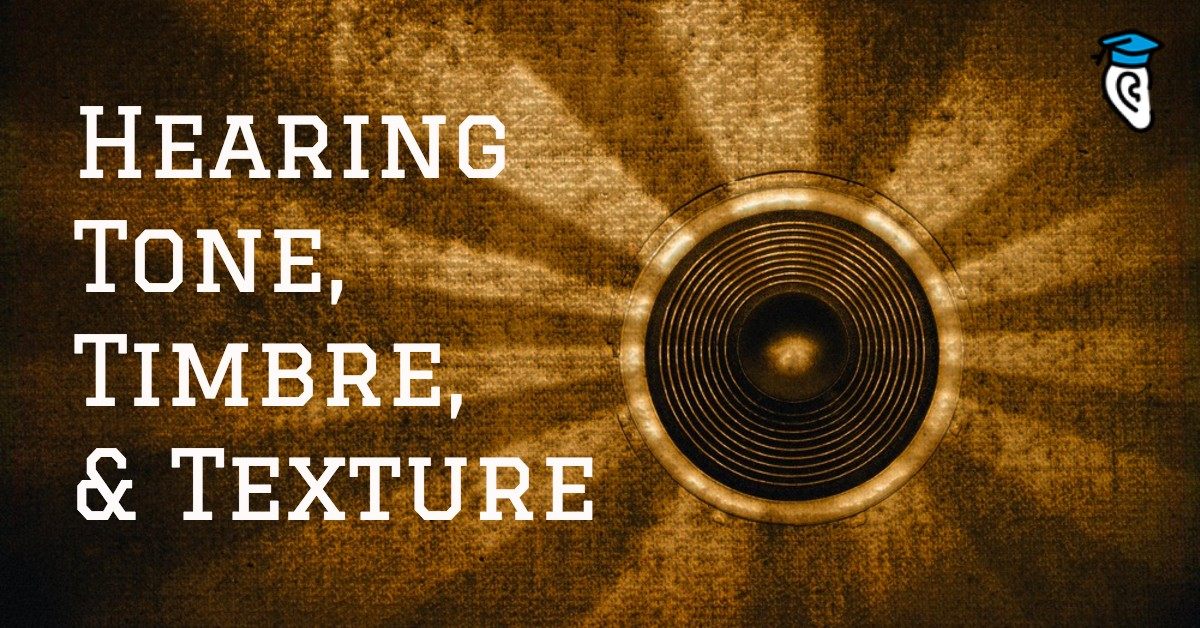About the Word “Tone” (Part Two)
We look at three more common uses for the word “tone” in our second part of this series about the multipurpose music term.
As well as pitch and volume, all musical notes have a tonal colour known as timbre. Timbre is what differentiates the sound of one instrument from another. It is a somewhat loose term compared to words like pitch and volume which we use to describe sound, but it can still be broken down and understood.
There are many ways to analyse timbre. Some of the components we might describe include:
An appreciation of timbre is what allows us to identify an instrument by ear. Often musicians will have an acute appreciation of timbre on their chosen instrument, allowing them, for example, to identify the specific type of instrument used on a recording by ear. Most experienced listeners can tell if, say, a note in a jazz record is a sax rather than a trumpet, while an experienced sax player might be able to tell you if it was an alto or a tenor sax being used.
Timbre ear training is often overlooked, but developing an appreciation of these more subtle qualities can pay great dividends! Be brave, and explore beyond your chosen instrument or musical style.
Understanding the range of sounds that instruments are capable of allows us to work with a more vivid palate of sounds and communicate better with our fellow musicians.
Investing some time in learning about timbre can help you to:
Watch a short video introducing timbre:
 Three concepts which many musicians get confused about are tone, timbre and texture. Each of these actually has a different meaning, though they are often used loosely and interchangeably. Learn what makes timbre unique and practice recognising it in Hearing Tone, Timbre, and Texture.
Three concepts which many musicians get confused about are tone, timbre and texture. Each of these actually has a different meaning, though they are often used loosely and interchangeably. Learn what makes timbre unique and practice recognising it in Hearing Tone, Timbre, and Texture.
We look at three more common uses for the word “tone” in our second part of this series about the multipurpose music term.
Modern music post-1945 saw composers using instruments in new and unexpected ways, reimagining the concepts of melody, timbre, and rhythm along the way.
Classical Era composers – like Haydn, Mozart, and Beethoven – packed balanced, symmetrical musical forms with emotional range, contrast, and catchy tunes.
Music reading is often taught first. But when we learn first by ear, our musicality emerges much more easily. Singing connects listening with music-making.
Most western music relies on a steady measured pulse. See what happens when the metrical safety net disappears in these passionate examples of free rhythm.
Looking for your own sound? Listen to these five rock improvisation giants and practice what you hear. You will absorb their greatness and make it your own.
Want to grow as a guitar player? Surprise: it’s not about your hands, but your ears. See how quickly a few aural skills can move you from awful to awesome!
Taught, tight and disciplined, funk guitarists do more with less. Learn about the style that makes the funk guitar greats tick and inspire your own playing.
Inexpensive digital sampling technology and the never-ending quest for new sounds has opened up the world of music to any and all sounds in our environment.
Discover 5 astonishingly beautiful tracks by Heitor Villa-Lobos, who infuses classical forms with Brazilian spirit to create a musical language all his own.
Understanding the differences and relationships between timbre, texture, and tone in music is a big part of playing an instrument. Read on to learn more.